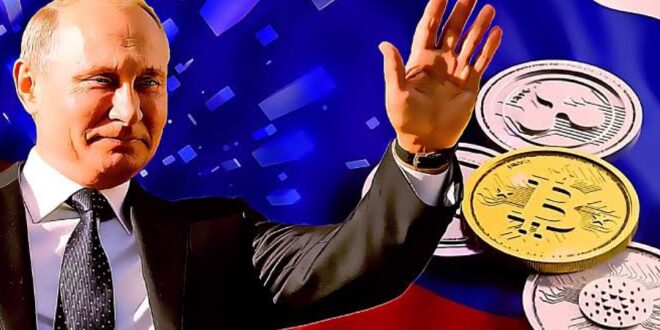In a notable shift, Russia has moved from a restrictive stance on cryptocurrencies to a more regulated embrace of digital assets under President Vladimir Putin’s strategy. This shift is driven by the need to mitigate the effects of Western sanctions and reduce reliance on the U.S. dollar. Here’s a look at the key components of Russia’s crypto adoption plan:
Legalizing and Regulating Cryptocurrency Mining
In a landmark move, Putin signed a law legalizing cryptocurrency mining in Russia. This legislation introduces critical terms like digital currency mining and mining pools, officially integrating mining activities into the nation’s financial system. The law requires miners to register with the government and comply with rules set by the Central Bank of Russia, positioning Russia to leverage its vast energy resources and become a major player in the global crypto mining scene.
Clear Taxation on Digital Assets
Russia has also advanced its crypto agenda by imposing taxes on digital asset transactions. A federal bill now classifies cryptocurrencies as property and subjects profits from crypto to a 13%-15% personal income tax. This creates a clear framework for crypto transactions, ensuring that digital assets contribute to the national economy through taxation while establishing a legal structure for their use.
VAT Exemption for Crypto Activities
To further incentivize the digital asset sector, Russia has exempted the sale and mining of cryptocurrencies from VAT. This tax relief is designed to reduce financial burdens on crypto-related activities and promote broader participation in the market. It also encourages both individuals and institutions to engage with cryptocurrencies, further driving adoption.
Cryptocurrency for International Trade
A critical aspect of Putin’s strategy is using cryptocurrencies to facilitate international trade, especially in the face of ongoing Western sanctions. The Central Bank of Russia has been exploring ways to integrate digital currencies into the national financial system for cross-border payments. The goal is to develop alternative payment systems that minimize reliance on the U.S. dollar, ensuring Russia’s economic resilience amidst geopolitical challenges.
Launch of the Digital Ruble
Russia’s introduction of a central bank digital currency (CBDC), the digital ruble, marks another pivotal step. Officially launched, the digital ruble acts as a third form of the national currency, complementing cash and non-cash rubles. Issued by the Central Bank, it enhances the efficiency of the payment system, promotes financial inclusion, and offers a state-controlled alternative to decentralized cryptocurrencies. The digital ruble’s integration is a cornerstone of Russia’s evolving crypto landscape.
Countering Sanctions with Crypto
Russia’s crypto push is largely a response to economic pressures from international sanctions. By adopting cryptocurrencies, Russia seeks to create alternative channels for international payments, bypassing traditional financial systems vulnerable to sanctions. This strategy is aimed at ensuring the continuity of trade and economic activity despite geopolitical challenges, allowing Russia to remain a resilient player in the global economy.
Challenges to Crypto Adoption in Russia
Despite these advances, Russia’s path to full crypto adoption faces several challenges:
- Regulatory Ambiguity: The evolving legal framework could create uncertainties for businesses and individuals engaging in crypto activities.
- Technological Infrastructure: Developing and maintaining the infrastructure needed for widespread crypto use requires significant investment and expertise.
- Geopolitical Tensions: Russia’s use of crypto to sidestep sanctions may lead to further tensions and potential retaliation from the international community.
What’s Next for Russia’s Crypto Strategy?
Looking ahead, Russia’s crypto adoption strategy will likely evolve through:
- Expanded Use of the Digital Ruble: Broader implementation of the digital ruble for both domestic and international transactions.
- Clearer Regulations: Further refinement of crypto-related laws to reduce uncertainty for participants in the crypto market.
- International Partnerships: Collaborations with other nations to establish frameworks for cross-border crypto transactions.
Putin’s strategy for cryptocurrency adoption represents a multifaceted approach that integrates digital assets into Russia’s financial system. By legalizing crypto mining, establishing clear taxation policies, offering VAT exemptions, and launching the digital ruble, Russia is setting the stage for digital assets to play a central role in its financial future. The country’s ability to navigate sanctions and tap into the potential of the evolving digital economy positions Russia as a key player in the global crypto landscape.
 Business Sandesh Indian Newspaper | Articles | Opinion Pieces | Research Studies | Findings & News | Sandesh News
Business Sandesh Indian Newspaper | Articles | Opinion Pieces | Research Studies | Findings & News | Sandesh News



